A homemade Thai iced tea, rich and creamy, with the typical orange color
In Bangkok, the late afternoon heat weighs like palm sugar syrup. Tuk-tuks sputter, while the metal tongs of a street vendor clang against a dented cooler. Behind a cloud of steam, she lifts an iron can and pours a stream of hot tea in an arc into a cup filled with crushed ice.
The hissing liquid instantly marbles, then a stream of condensed milk unfurls in creamy swirls. The first sip is initially tannic, then creamy, and finally very sweet. Beyond just a remedy for the heat, Thai iced tea tells the story of trade routes and local ingenuity.

The Origin of Thai Iced Tea
Tea reached the royal courts of Siam as early as the 17th century, enjoyed hot and austere by an elite who appreciated Chinese leaves for their subtle aroma. However, two industrial revolutions would change the game. In 1893, Nestlé began shipping canned sweetened condensed milk to the kingdom. Ten years later, Bangkok’s first ice factory cut river ice into crystalline cubes.
Suddenly, tea could be both creamy and iced in a country that hardly knew coolness. Indian merchants popularized the habit of chai with milk, while Sino-Thai entrepreneurs adapted it to local palates fond of a more pronounced sweetness.
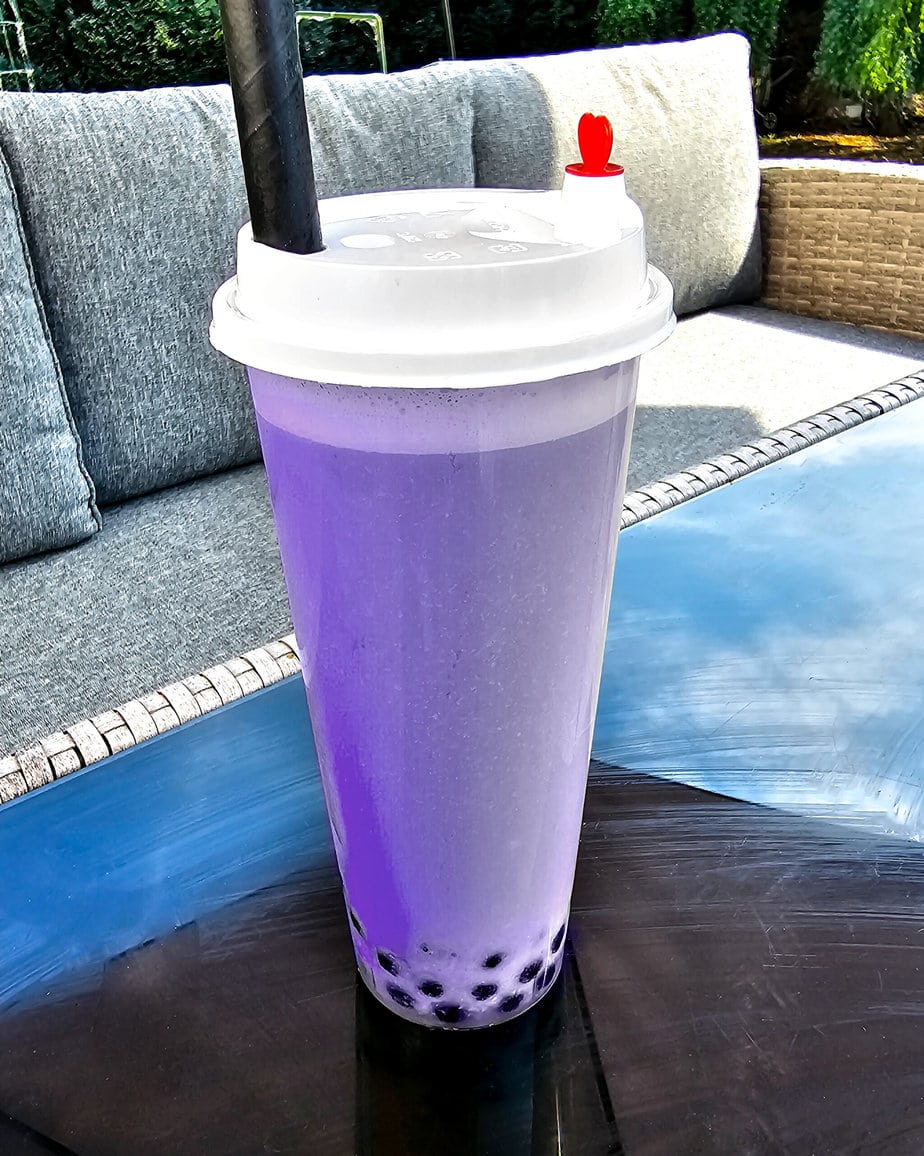
The next step came in 1945, when Cha Tra Mue opened in Bangkok. Its founders replaced the expensive Ceylon with a stronger and more affordable Assam, then accentuated the brick-red color of the infusion with food coloring so that customers could distinguish the tea from coffee after adding milk.
A flamboyant orange glass was thus born, announcing the flavor from afar. In a few years, cha yen became a must-have in cafes, and in 2023 TasteAtlas would rank it the seventh best non-alcoholic drink in the world.
What Makes it Authentic: Ingredients and Vendors’ Technique
Authenticity begins with a strong tea: a broken-leaf Assam or a commercial Thai blend, slightly vanilla-flavored, colored with food coloring E110 (Yellow No. 6), sometimes mixed with other shades, to obtain that inimitable terracotta glow.
Vendors place a measured portion of leaves in a “tea sock” made of cloth, douse it with boiling water, then “brew” the infusion between two kettles to aerate it and release the tannins. The concentrate turns almost ink-like: a guarantee against the upcoming dilution.

Sugar and a generous stream of sweetened condensed milk are incorporated while the liquid is still hot. This double sweetness provides what Thais call “หวาน มัน” (wan-man), both sweet and rich, so that the drink remains dessert-worthy even when the ice melts. The hot preparation is then poured over a mountain of crushed ice, chilling it instantly. A layer of condensed milk then drifts on the surface, forming ripples that slowly subside and marble the glass.
The final identity of this milk tea is easy to describe but difficult to imitate: a tannic backbone for structure, a creamy mid-palate for body, and a caramel-like finish that lingers just long enough to invite another sip. Replace even one element (under-steeped tea, simple white sugar, or milk substitute) and the balance derails, leaving a drink that might be pleasant but is no longer truly cha yen.
An Authentic Cha Yen in Brief
- Flavor signature: bright black tea, hint of vanilla, near absence of distinct masala spices.
- The orange hue now comes from food coloring; historically, safflower petals or roasted tamarind seeds were used.
- The ideal profile follows the local mantra “หวาน มัน”(wan-man): as sweet as it is rich.
Myths and Contemporary Variations
Too many “spices?” Star anise and cardamom are not essential. On Bangkok’s sidewalks, any potential spice (I emphasize this, it’s not at all mandatory to have anything other than tea) is already in the tea blend; vendors rarely throw whole pods into the pot.
Is coconut milk the “tradition”? It’s a 21st-century vegan trick, delicious for sure, but historically off-topic.
Compare the glasses and you’ll see two schools. The street version is bright orange, very sweet, and topped with canned condensed milk. Many Western cafes temper the sweetness, replace condensed milk with light cream, and omit the floating layer, offering paler and lighter sips.
In the deep South of Thailand, the preparation becomes performance art: cha chak, or “pulled tea,” is tossed from one kettle to another until it forms a foam, then served hot or iced. A green version flavored with jasmine, on the other hand, seduces culinary influencers.
Thais often accompany cha yen with pa thong ko fritters or any green curry or stir-fry that makes the tongue dance: sugar and fat then play the role of culinary fire extinguishers.
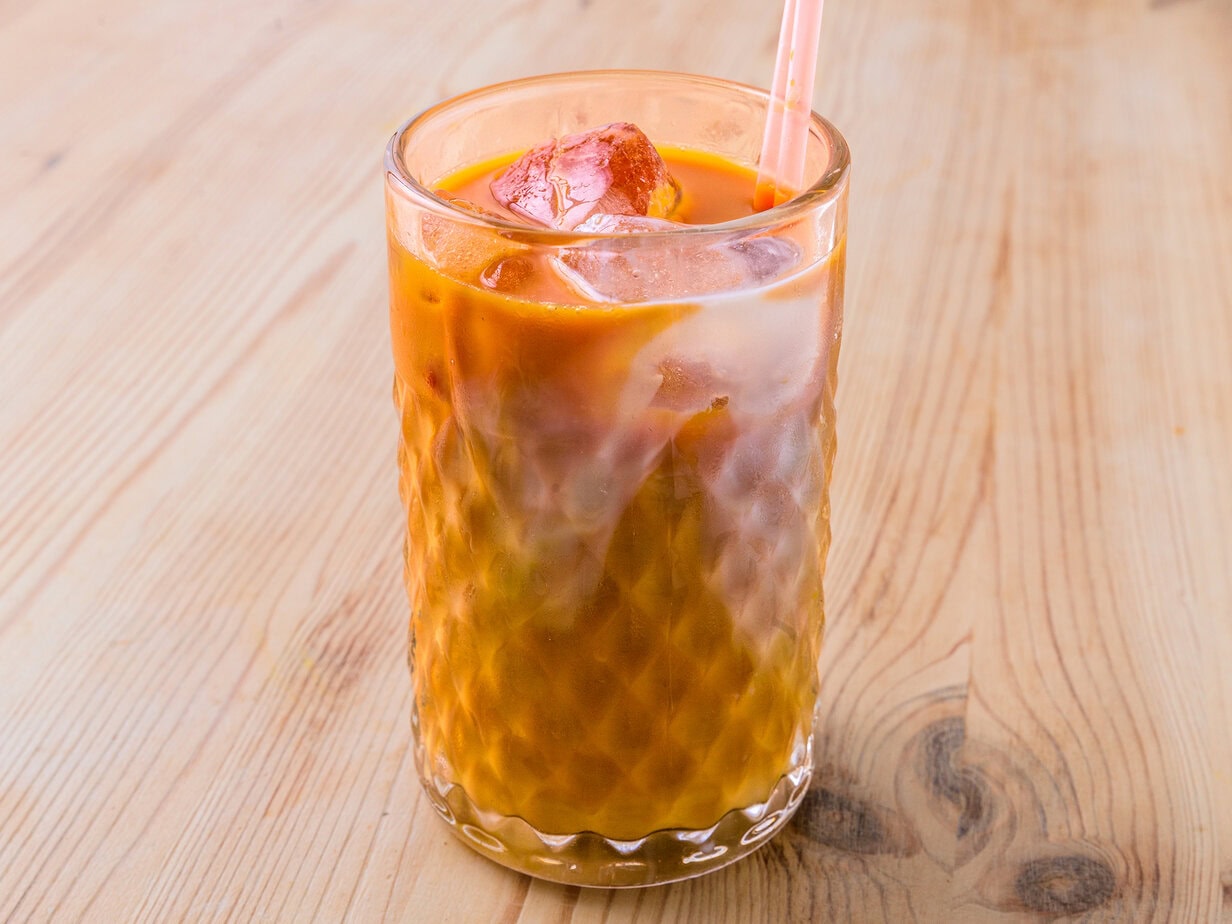
Thai Iced Tea
Ingredients
- 5 tea bags of black tea
- 0.5 teaspoon of orange food coloring FD Yellow #6 or E110 color
- 480 ml water boiling
- 15 g of sugar granulated
- 60 ml of sweetened condensed milk
- 60 g of powdered milk
- 1 pinch salt
- Ice cubes to serve
Instructions
Preparation
- Place the tea bags in a large bowl.5 tea bags of black tea
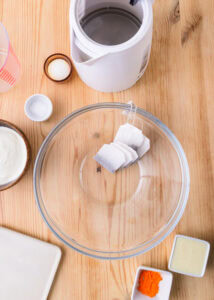
- Bring the water to a boil.480 ml water
- Pour the boiling water over the tea bags, let steep for maximum time.
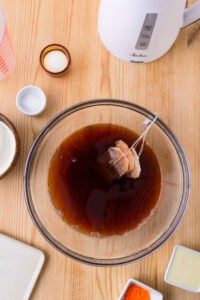
- Add the orange food coloring and whisk.0.5 teaspoon of orange food coloring
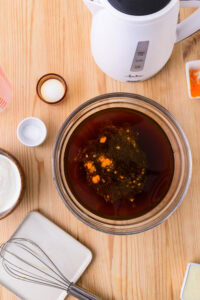
- Incorporate the granulated sugar, sweetened condensed milk, powdered milk, and salt.15 g of sugar, 60 ml of sweetened condensed milk, 60 g of powdered milk, 1 pinch salt

- Add a bit more food coloring if necessary to achieve the traditional color.
- Place in the refrigerator for about an hour to cool.
- Fill a large glass with ice cubes, pour the tea over it.Ice cubes
Notes
Nutrition
Culinary sources
- Punpromotion – “History of Thai Tea”: origin of the famous “cha สีส้ม”, evolution of its name and color
- Bangkok Biz News – “ชาไทย” ranked 7th best drink in the world: historical retrospective and international recognition
- The Matter – “เรื่องชาไทยฉบับวินเทจ”: investigation into the inventor of ice in tea and the global passion for Thai tea
- Thai Tea – Wikipedia: encyclopedic entry, ingredients and variations
- Thai Iced Tea Recipe – Serious Eats: detailed recipe and advice on spice dosage
- Thai Iced Tea (ชาเย็น) – EatingThaiFood: “authentic street-food” method step-by-step
- How to Make Thai Iced Tea Like in Thailand – Hot Thai Kitchen: video and tips to reproduce the local version
- Thai Iced Tea – Alton Brown: homemade interpretation of the iconic drink
- Making Thai Iced Tea from Scratch – Tea in the Ancient World: reflection on traditional tea blends and colorants

